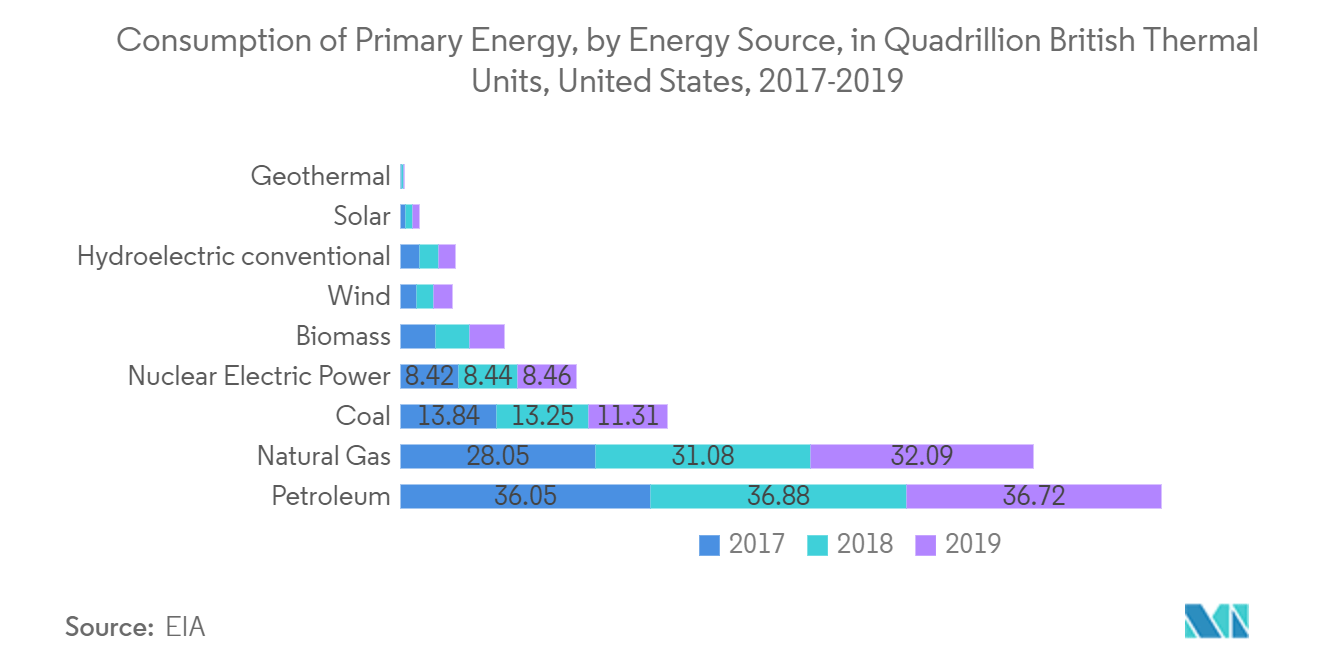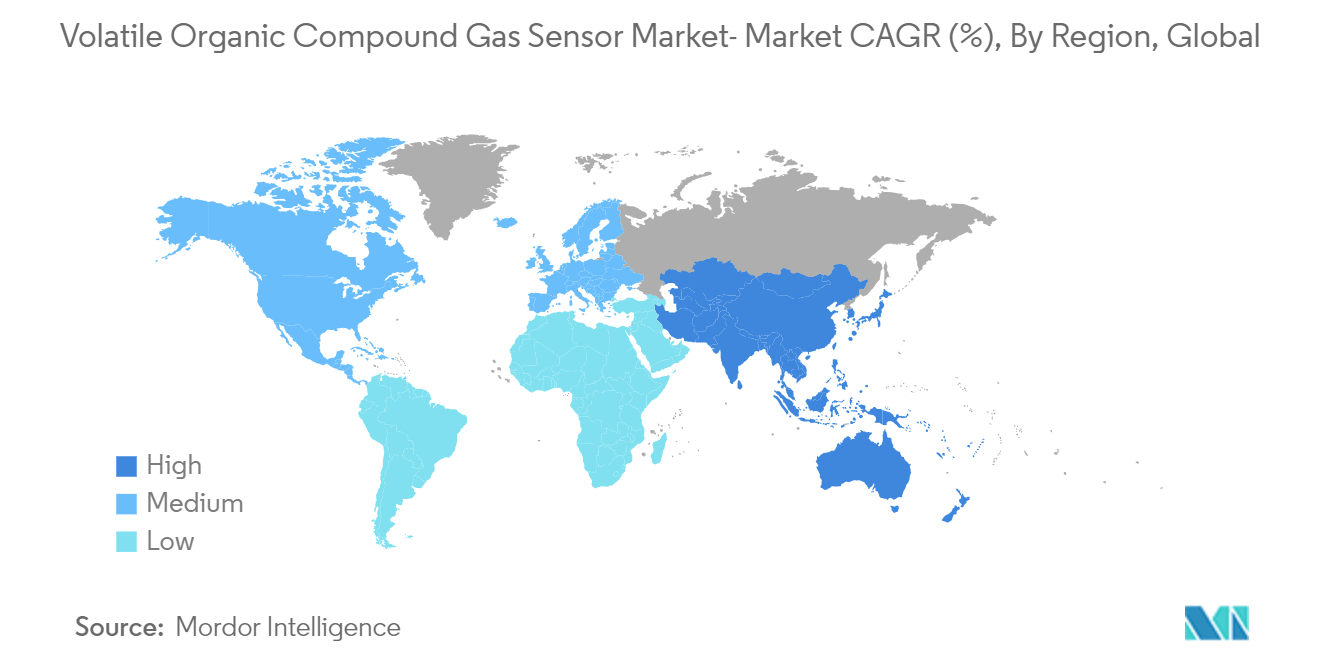Market Trends of Volatile Organic Compound Gas Sensor Industry
Oil & Gas Industry to Drive the Market Growth
- The increasing initiatives by the government and the related regulatory bodies to meet the growing energy demand are increasingly launching new projects to accomplish the objective. Since the energy sector is prone to the emission of volatile gases, it would propel such bodies to install solutions such as VOC gas sensors.
- In February 2020, ADNOC announced two contracts for the construction of offshore facilities for the Dalma Gas Development Project to Petrofac Emirates LLC. The two EPC contracts have an estimated value of over AED 6.06 billion and are expected to be completed by 2022. Such instances are expected to boost the adoption of the technology over the forecast period.
- The increasing demand for fuels and natural gases have propelled the players in the region to either boost their production or to look for expansion of their production capabilities. Such instances are expected to fuel the adoption of the VOC gas sensors over the forecast period.
- According to the BP Statistical Review of World Energy of 2019, Global oil production rose by 2.2 million b/d. Almost all of the net increase was accounted for by the US, with their growth in production (2.2 million b/d) a record for any country in any year. Elsewhere, production growth in Canada (410,000 b/d) and Saudi Arabia (390,000 b/d) was outweighed by declines in Venezuela (-580,000 b/d) and Iran (-310,000 b/d).
- However, the challenge from the COVID-19 outbreak for oil and gas companies has been heightened by the oil-price collapse and continuing price uncertainty. In response, the Opec+ group announced the world’s largest-ever supply cut deal, by 10m barrels per day. Moreover, many industrial operations across the world have been shut down owing to the outbreak.

North America to Hold Major Market Share
- The region's governments have underlined the regulatory framework and required/mandated infrastructure for utility companies to function at optimal levels. Utilities primarily run the base of civilization, and society needs this basic need to function on more than just a financial level, making it a safe bet for volatile times in the market. Due to the continuous involvement of the government, the measures to safeguard the workplace need to be handled with the utmost importance. This provides a huge market opportunity for gas sensor manufacturers.
- For instance, as of January 2020, the DOE selected 16 projects to receive nearly USD 25 million in federal funding for cost-shared projects to advance natural gas infrastructure technology development. One of the major areas where cost is associated belongs to retrofits. The developments across building a low-cost retrofit technology, specifically to an air management system, integrated sensors, and a cloud-connected control system, are expected to reduce emissions.
- On the other hand, The region witnessing a few incidents in the oil and gas domains has confirmed the need for meticulous monitoring of the transportation of volatile fuels. The 2010 gas explosion in San Bruno, California, revealed that PG&E failed to have appropriate detection equipment in place, but the utility was negligent across periodic testing of its transmission lines.
- Different modalities, including temperature, pressure, vibration, and strain/stress, are required to sense and monitor continuously to guarantee the integrity of oil and gas production, storage, and transport infrastructure onshore and offshore.
- Also, with the safety and reliability of oil production to be assured, multiple advanced sensing techniques have been developed to cater to the specific sensing requirements under high-pressure-high-temperature (HPHT) environments across oil and gas applications in recent decades.


